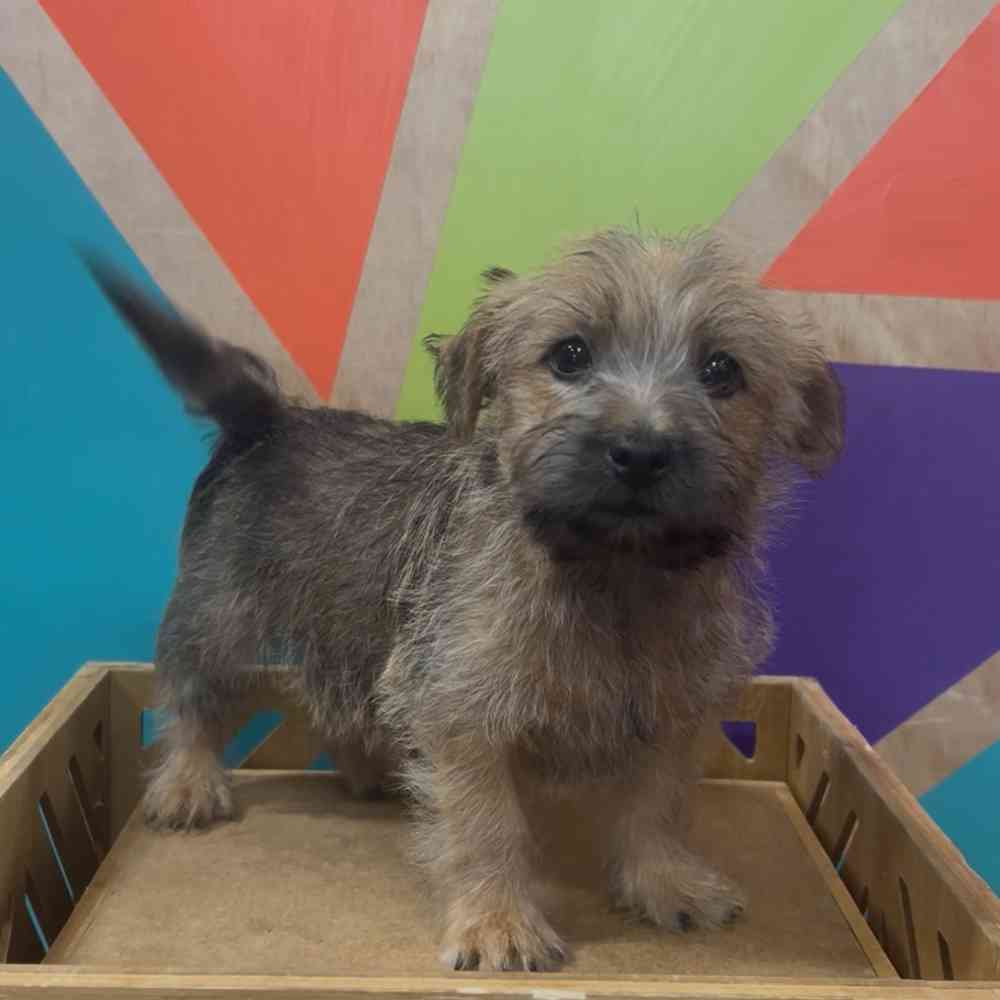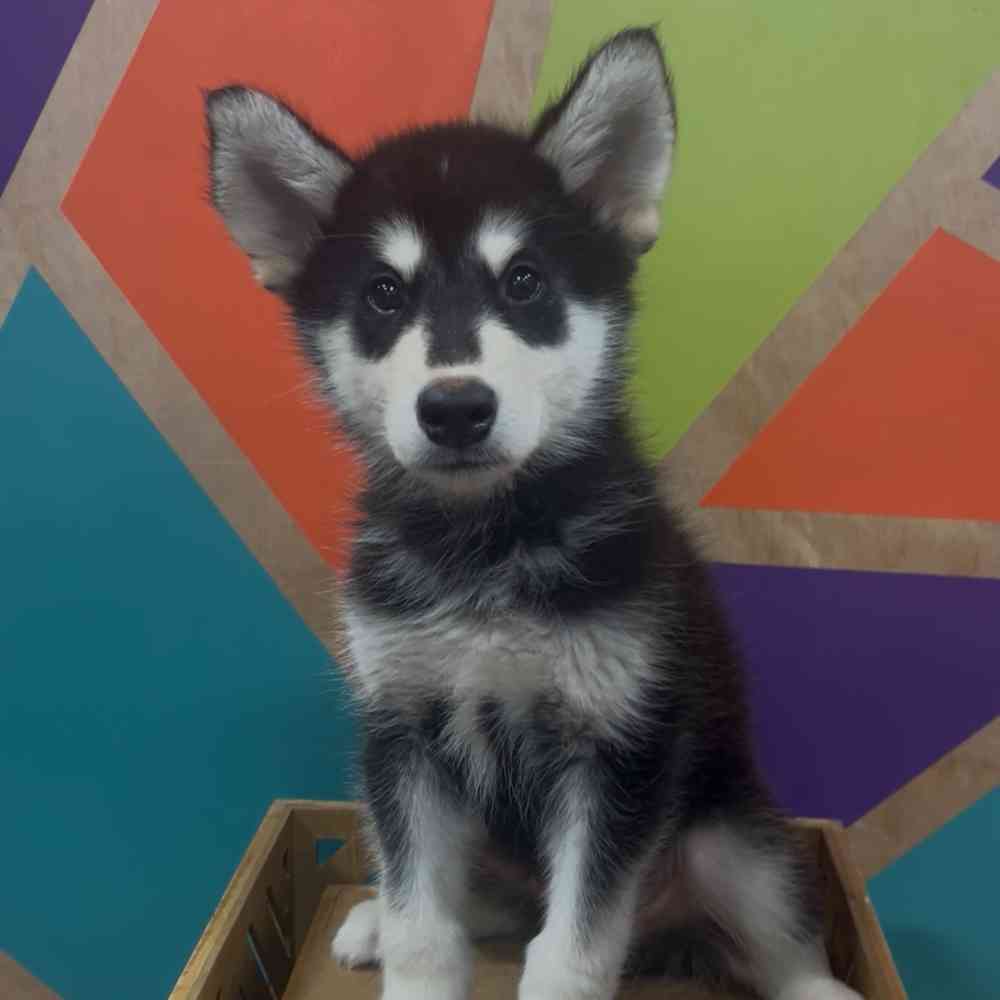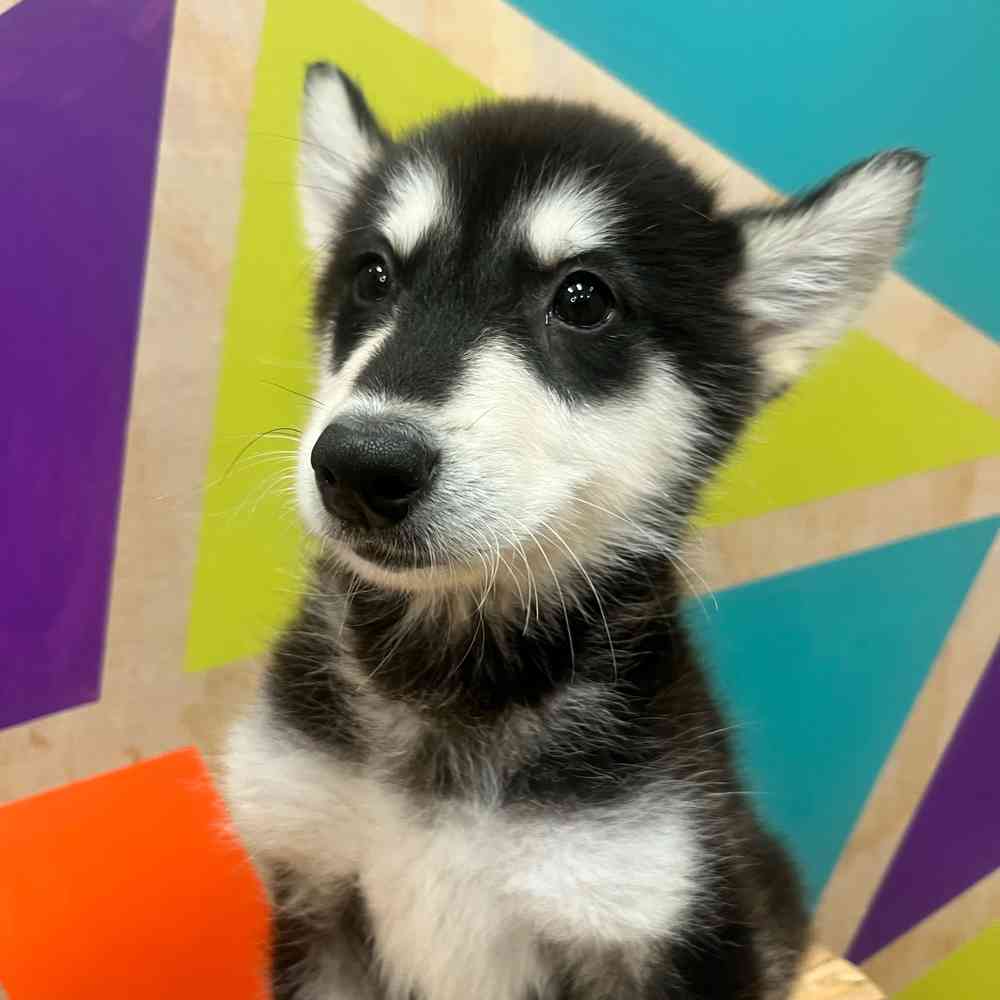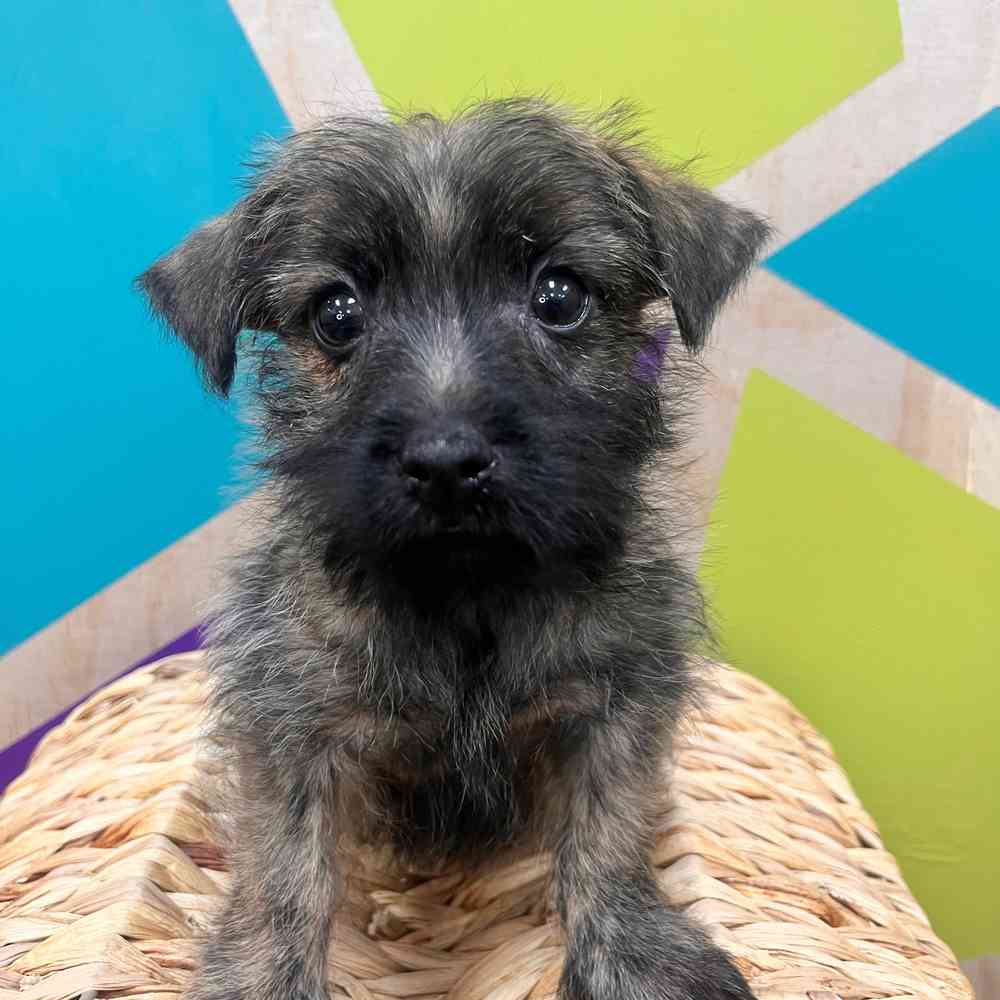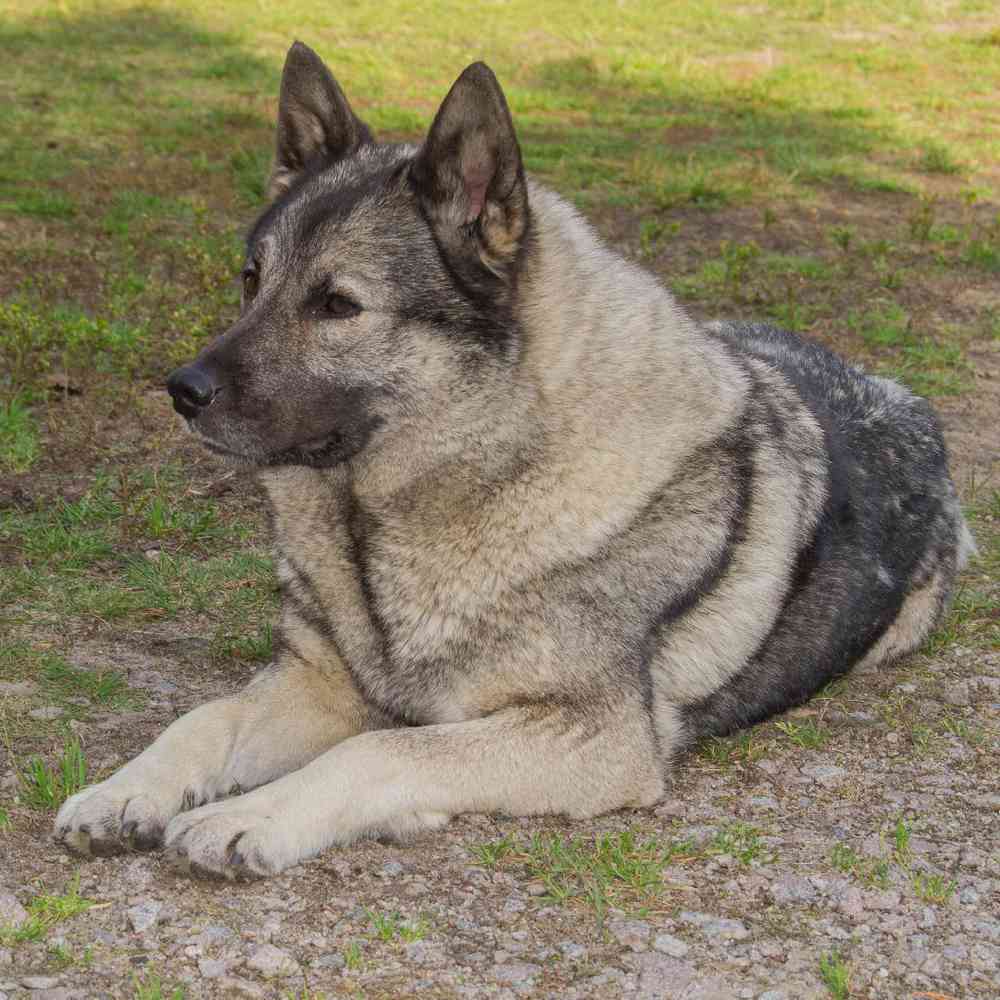
AKC Registrable
Norwegian Elkhound
The Norwegian Elkhound is a robust spitz type known for his lush silver-gray coat and dignified but friendly demeanor. The durable Elkhound is among Europe's oldest dogs. They sailed with the Vikings and figure in Norse art and legend.
Available Pups
Puppy Knowledge
Breed Info
Clubs, Registries & Associations
American Canine Association Continental Kennel Club Universal Kennel Club International American Kennel Club United All Breed Registry America's Pet Registry, Inc. United Kennel Club (Based on breed recognition. See store for details on this particular puppy.)
Group
Hound
Heritage
The Norwegian Elkhound is an ancient Scandinavian breed dating to 4000-5000 BC. They were sled, guard and hunting dogs, used as both big and small game tracking dogs for elk, bear, reindeer, moose, mountain lion, lynx, rabbit and badger.
Description
Medium, 18-21” at the shoulders, weighing anywhere from 40-60 pounds with a sturdy body and deep, wide chest. The overcoat is gray with black tips with a lighter gray undercoat, black muzzle, ears and tip of the tail. This breed’s puppies are born black and turn grey as their coat develops around 7 days old. Their paws are small with thick pads, and tightly curled tail that sits high over their back.
Health Awareness
The Norwegian Elkhound has a life expectancy of 12-15 years. This breed is also prone to hip dysplasia, pyotraumatic dermatitis, kidney disease, and progressive retinal atrophy.
Personality
The Norwegian Elkhound is affectionate and trustworthy with family members, and good with children. Be sure, though, to socialize this breed to babies and toddlers because of their guarding instincts. They can be reserved with people they don’t know, but comfortable and friendly with familiar people. This breed needs a confident and humane leader who teaches and sets consistent rules. All snow dogs, including the Norwegian Elkhound, are independent and require patient communication and humane, positive training techniques. Otherwise they will ignore your attempts to train. This breed has natural instincts to hold their prey at bay and bark until their human hunting companion arrives. So they naturally roam and bark. They require plenty of mental and physical stimulation or other behavior issues will result.
Additional Information
Grooming Requirements: Double coat should be brushed regularly. Bathe only when necessary because it removes the natural oils in the dirt-resistant and weatherproof coat. Coat: Short and coarse. Shedding: Seasonal heavy shedding. Hypoallergenic: No, due to shedding. Apartment Living: Suitable for an apartment only if given daily exercise in an open area or large yard. Lap Dog: No Good With Children: Great with older children, needs proper socialization with babies and toddlers. Good With Other Pets: Generally friendly with other dogs when introduced properly; exercise caution with other pets, such as hamsters and guinea pigs, pet rats and mice. Generally good with cats when introduced properly.
Breed Standard
General Appearance
The Norwegian Elkhound is a hardy gray hunting dog. In appearance, a typical northern dog of medium size and substance, square in profile, close coupled and balanced in proportions. The head is broad with prick ears, and the tail is tightly curled and carried over the back. The distinctive gray coat is dense and smooth lying. As a hunter, the Norwegian Elkhound has the courage, agility and stamina to hold moose and other big game at bay by barking and dodging attack, and the endurance to track for long hours in all weather over rough and varied terrain.
Size, Proportion, Substance
Height at the withers for dogs is 20½ inches, for bitches 19½ inches. Weight for dogs about 55 pounds, for bitches about 48 pounds. Square in profile and close coupled. Distance from brisket to ground appears to be half the height at the withers. Distance from forechest to rump equals the height at the withers. Bone is substantial, without being coarse.
Head
Head broad at the ears, wedge shaped, strong and dry (without loose skin). Expression keen, alert, indicating a dog with great courage. Eyes very dark brown, medium in size, oval, not protruding. Ears set high, firm and erect, yet very mobile. Comparatively small; slightly taller than their width at the base with pointed (not rounded) tips. When the dog is alert, the orifices turn forward and the outer edges are vertical. When relaxed or showing affection, the ears go back, and the dog should not be penalized for doing this during the judge's examination. Viewed from the side, the forehead and back of the skull are only slightly arched; the stop not large, yet clearly defined. The muzzle is thickest at the base and, seen from above or from the side, tapers evenly without being pointed. The bridge of the nose is straight, parallel to and about the same length as the skull. Lips are tightly closed and teeth meet in a scissors bite.
Neck, Topline, Body
Neck of medium length, muscular, well set up with a slight arch and with no loose skin on the throat. Topline--The back is straight and strong from its high point at the withers to the root of the tail. The body is short and close-coupled with the rib cage accounting for most of its length. Chest deep and moderately broad; brisket level with points of elbows; and ribs well sprung. Loin short and wide with very little tuck-up. Tail set high, tightly curled, and carried over the centerline of the back. It is thickly and closely haired, without brush. natural and untrimmed.
Forequarters
Shoulders sloping with elbows closely set on. Legs well under body and medium in length; substantial, but not coarse, in bone. Seen from the front, the legs appear straight and parallel. Single dewclaws are normally present. Feet--Paws comparatively small, slightly oval with tightly closed toes and thick pads. Pasterns are strong and only slightly bent. Feet turn neither in nor out.
Hindquarters
Moderate angulation at stifle and hock. Thighs are broad and well muscled. Seen from behind, legs are straight, strong and without dewclaws. Feet as in front.
Coat
Thick, hard, weather resisting and smooth lying; made up of soft, dense, woolly undercoat and coarse, straight covering hairs. Short and even on head, ears, and front of legs; longest on back of neck, buttocks and underside of tail. The coat is not altered by trimming, clipping or artificial treatment. Trimming of whiskers is optional. In the show ring, presentation in a natural, unaltered condition is essential.
Color
Gray, medium preferred, variations in shade determined by the length of black tips and quantity of guard hairs. Undercoat is clear light silver as are legs, stomach, buttocks, and underside of tail. The gray body color is darkest on the saddle, lighter on the chest, mane and distinctive harness mark (a band of longer guard hairs from shoulder to elbow). The muzzle, ears and tail tip are black. The black of the muzzle shades to lighter gray over the forehead and skull. Yellow or brown shading, white patches, indistinct or irregular markings, "sooty" coloring on the lower legs and light circles around the eyes are undesirable. Any overall color other than gray as described above, such as red, brown, solid black, white or other solid color, disqualifies.
Temperament
Friendly, Confident, Dependable
Disqualifications
An overall color other than gray.
Overview
About
Norwegian Elkhounds are hardy, short-bodied dogs standing about 20 inches at the shoulder. They have a dense silver-gray coat and a tail curling tightly over the back. The deep chest, sturdy legs, and muscular thighs belong to a dog built for an honest day’s work. The eyes are a dark brown and the ears mobile and erect. Overall, an Elkhound is the picture of an alert and steadfast dog of the north. Elkhounds are famously fine companions and intelligent watchdogs. Agility and herding trials are good outlets for their natural athleticism and eagerness. Reserved until introductions are made, an Elkhound is a trustworthy friend ever after. These strong, confident dogs are truly sensitive souls, with a dash of houndy independence.
History
Shipmate of the Vikings, guardian of remote farms, herder of flocks and defender from wolves and bear, a sometime hauler and a hunter always, and a companion to restless wandering men, the Norwegian Elkhound has survived more than six millennia with all his Nordic traits intact, a fearless and friendly dog, devoted to humankind. The Elkhound looms in Norse history and myth. We read of him in the epic sagas of ancient times, we find his remains aside his Viking master along with the Viking’s sword and shield, proof of the high regard in which he was held; and in the Viste Cave at Jaeren, in western Norway, his skeleton was found among the stone tools in stratum dating from 4000 to 5000 b.c. Among the many oft-told tales associated with the breed is one from the 12th century, in which an Elkhound was named king in the land of Throndhjem. The name Elkhound acknowledges the breed’s age-old quarry, the giant elk, or moose. Elkhounds specialized in following the scent trail of these magnificent and dangerous creatures over a distance and holding them at bay while dodging attack until the trailing huntsmen arrived. Elkhounds look nothing like the droopy-eared, sleek-coated scenthounds developed in warmer climes, but they are classified as hounds by virtue of their job description: trailing and holding warm-blooded quarry.
Standard
The Norwegian Elkhound is a hardy gray hunting dog. In appearance, a typical northern dog of medium size and substance, square in profile, close coupled and balanced in proportions. The head is broad with prick ears, and the tail is tightly curled and carried over the back. The distinctive gray coat is dense and smooth lying. As a hunter, the Norwegian Elkhound has the courage, agility and stamina to hold moose and other big game at bay by barking and dodging attack, and the endurance to track for long hours in all weather over rough and varied terrain.
Nutrition
The Norwegian Elkhound should do well on a high-quality dog food, whether commercially manufactured or home-prepared with your veterinarian’s supervision and approval. Any diet should be appropriate to the dog’s age (puppy, adult, or senior). Most Elkhounds are “food hounds,” not picky eaters, and will develop pitiful faces in order to weaken their humans into giving them as many treats as can be mustered! A key to assessing whether the Elkhound is in good weight is to watch them when they eat. The area just behind the end of the ribcage should sink in when they eat. Another indication of an overweight dog is a rolling motion on the dog’s back or sides when he trots. Learn about which human foods are safe for dogs, and which are not. Check with your vet if you have any concerns about your dog’s weight or diet. Clean, fresh water should be available at all times.
Grooming
The Norwegian Elkhound has a “two-ply” coat, with a top coat and an undercoat. Elkhound breeders warn potential puppy buyers of the inevitable—that during shedding season they will have “tumbleweeds” of silver undercoat rolling around their house. The outer coat will shed as well, but not to the degree that the undercoat will. A slicker brush will help you keep the fur storm under control. Five minutes a day of “back-brushing” (brushing in the opposite direction to which the coat lies) will take care of the problem for most of the year. Daily maintenance of just two minutes a day at other times will keep the coat beautiful, and will give your vacuum a new lease on life! Elkhounds do not have a doggy smell, due to the harshness of the coat. A bath two to three times a year for the family pet is perfect and helps the dead coat to fall out and new, healthy hair to grow in.
Exercise
These are hunting dogs in their native Norway. They track and follow moose, ranging far ahead of the hunter, and they must be able to trot many miles for several days if necessary. Because they must make their own decisions when hunting, and by virtue of the way they hunt, they are independent and lovers of the woods and their freedom. For that reason, when exercising their Norwegian Elkhounds, owners should resist the temptation to allow them to roam the neighborhood or the park off lead. The instinct to travel and to inspect the world is intrinsic to the breed. Most love swimming (a required moose-trailing activity), and many enjoy agility as well as herding trials.
Training
This breed does not tend to be a star performer in the obedience ring. The Elkhound learns very quickly, being highly intelligent, but after this learning process it becomes, “Didn’t we already do this 12 times?” The other difficulty in training this breed for activities is their independent nature, inspired by their hunting traits. As far as simple house manners, they are very clean and quickly respond to correctly managed housebreaking.
Health
By and large this is a very healthy breed. The average life span is 12–14 years, with most owners losing their dogs due to cancer or heart issues. Negligible incidences of PRA have been found but can be traced to foreign dogs. hip dysplasia occurs, but by and large dogs that are checked usually get a “good” or “fair” evaluation from OFA, with many rating “excellent.” There have been some bouts of renal (kidney) issues, but this seems to have been put out of the breed’s current state of health.


